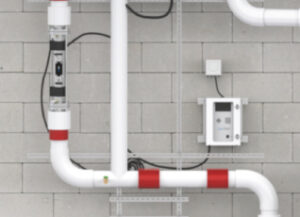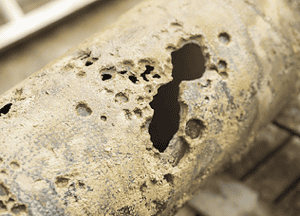Legionnaires’ disease, a deadly but preventable form of pneumonia, is a risk in healthcare facilities across the country. The Legionella bacterium causes this infection and is found naturally in fresh, warm water sources. However, it can increase in the plumbing of large buildings such as hospitals. For this to happen, Legionella must first grow and then spread through tiny, contaminated water droplets that people can inhale as a mist, steam, or vapor.
Legionella is dangerous because it can sometimes go undetected and can contaminate medical equipment. Patients breathe in airborne mist from contaminated water droplets which could lead to an outbreak of Legionnaires’ disease.
It is important to note that most healthy people who are exposed to Legionella bacteria don’t go on to develop the disease. Individuals who have compromised immune systems are more vulnerable to the illness. Symptoms of the ailment include fever, chills, fatigue, muscle aches, and more.
The first recorded case of a Legionnaires’ disease outbreak was in 1976 at the American Legion convention in Philadelphia. More than 180 individuals who attended the convention got sick with a form of pneumonia, and 29 of them died. Soon after this event, the bacterium was discovered and acquired its name: Legionella. But how can you protect your healthcare facility from Legionella growth?
Legionella prevention measures
Keeping the water supply in healthcare facilities safe is crucial to protecting patients, staff, and guests from contracting Legionnaires’ disease. Here are some ways facility managers can prevent Legionella bacterial growth in hospitals:
- Conduct a risk assessment. A building-wide risk assessment can help you identify compromised areas where Legionella bacteria can grow in your water systems.
- Build an experienced water management team. Team members should have clear roles and responsibilities to ensure the risk of waterborne pathogens is fully mitigated.
- Establish a water management program. Determine and execute a regular verification and validation program and maintenance schedule for your facility’s water system from the point of entry to point-of-use.
- Use copper-silver ionization and ultraviolet disinfection as treatment methods. If you haven’t had an issue with Legionella, that is great, but you should be proactive in ensuring it doesn’t happen by implementing a multi-barrier supplemental disinfection system.
- If your organization has tested positive for Legionella, a multi-barrier system including copper-silver ionization, ultraviolet disinfection, and point-of-entry filtration can remediate the situation and keep the system healthy in both the short and long term.
Trust LiquiTech’s water management solutions
Looking to eradicate waterborne pathogens from your building’s water system? LiquiTech can help. We serve many industries, including the healthcare sector. We strive to create healthier communities by improving water quality with our comprehensive water solutions. Our core products include copper-silver ionization, point-of-use filtration, point-of-entry filtration, and water management plans. We also provide risk assessments, testing and validation, remote monitoring, and flexible maintenance plans.
Our advanced technology and EPA approval keep us ahead of other water management companies. When you turn to us for water treatment services, you’ll have peace of mind knowing that your patients, staff, and guests are protected from dangerous waterborne pathogens.


